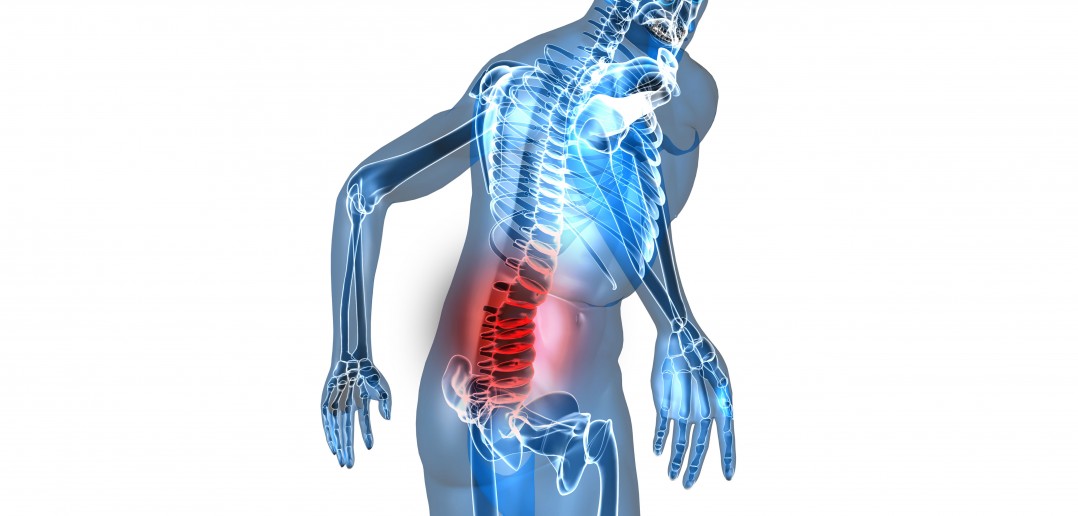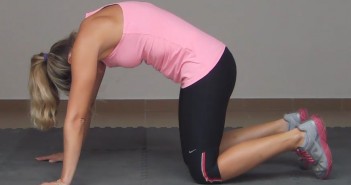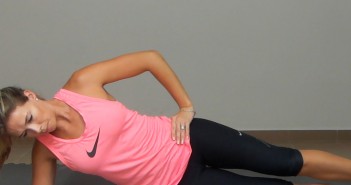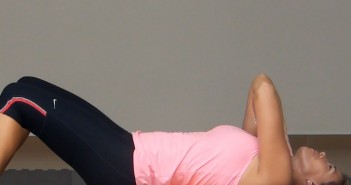When you adopt the Swing like a Champion system, you should never suffer from golf-related back pain again, but back pain is endemic in the modern world, and almost all of us will suffer from it at some point in our lives. According to the American Pain Society, up to 70 percent of us will experience lower back pain in our lifetimes, and many will progress to long term, chronic lower back pain.
Our daily habits and posture make us all very prone to poor spine mobility, we spend a lot of time sitting, putting our bodies in a constant state of flexion, which leads to chronic back pain. Bowing of the upper back is a virtual epidemic – just take a look around you the next time you’re in a coffee shop or at the office, rounded backs abound!
How to Avoid Back Pain
The best form of pain reduction is avoiding back pain in the first place.
- When playing golf, make sure that you adopt perfect golf posture at address.
- When lifting, especially with heavy objects, keep your back as straight as possible and use your legs. Do not bend at your waist.
- When sitting, avoid slouching – see A Day of Perfect Posture – and use a lower back support to keep the pressure distributed evenly on the muscles of your lower back.
What Causes Back Pain?
Because of the complexity of the structures in the back, there is no single mechanism that accounts for lower back pain and injury.
The tissues (muscles, bones, joints, ligaments, tendons, and disks) of your back all have to work together in perfect harmony to avoid injury. Any weak link in the chain will lead to injury.
Even when all these parts work well, some back injuries are simply unavoidable. As a golfer, you are an athlete, and as such you accept the risk of back injuries, just like anyone else who decides to play a sport or exercise regularly, vigorously or over a long period of time.
There are a variety of possible back injuries and back conditions. The most common affecting golfers are back strains, spondylolysis, spondylolisthesis, and herniated disks. The causes, symptoms, and treatment of each of these conditions is slightly different, so it would be a mistake to consider all lower back problems as a single condition with exactly the same cause, treatment or prevention strategy.
However, by far the most common back problems affecting golfers are back strains, and there are some common denominators when it comes to lower back pain caused by strains.
Back strains are tears in tendons or ligaments. They occur after sudden or awkward movements, and are often triggered by seemingly harmless movements, such as bending over to tie your shoe lace, picking up a child, or reaching up to get something off a shelf.
Strains may be accompanied by structural problems. A bulging disk (the soft material between vertebrae) may press against a nerve, and if it presses against the nerve that extends downwards through the leg, it can cause a shooting pain called sciatica that affects the buttocks and the back of the leg. Skeletal irregularities, such as scoliosis – a side-to-side deviation of the spinal column – can cause pain in the upper, mid or lower back. And the lower back is one of the most frequent areas affected by osteoarthritis.
Golf-Related Back Pain
Lower back injuries account for the majority of golf-related injuries in professional golfers. It’s not quite so bad for amateurs, mainly because most of them swing slowly and don’t use their lower body properly for power.
Rotation of the lumbar spine, in work or leisure, is directly correlated with lower back injury. When these rotational movements are combined with forward bending of the spine, the likelihood of lower back injury is greatly increased – so it’s obvious why lower back pain is the number one injury for golfers.
The golf swing requires multiple joints to undergo near-maximal rotation for it to be performed efficiently. A loss of mobility, or excessive movement, in any one of these areas will result in undesirable compensations within the kinetic chain.
In a powerful golf swing, the compressive forces in the lower back are equivalent to eight times a person’s body weight – that’s at least twice the compression suffered by elite runners, and running is considered a high-impact sport!
Golfers often assume that their back pain problem is because of lack of spinal mobility, but it’s often the hips that are the root cause. If your hips are tight and inflexible then you can’t swing efficiently, and over time this will result in wear and tear on your joints and muscles.
By learning to move correctly, using the Swing like a Champion system and the exercises in the Golf Loopy Train like a Champion System, you can dramatically reduce or eliminate the potential for golf-related back pain and injury. And your golf swing will improve dramatically, too!
Treatment
The majority of lower back pain will improve with or without medical attention, but you will recover more quickly with the treatment below.
See a doctor immediately if the pain is intense, spreads down one or both legs, causes weakness or numbness, or follows a fall or a blow to your back.
- Rest your back for a couple of days, but do not stay completely immobile; limited, mild movement is better than bed rest.
- Apply ice packs for 15 to 20 minutes, 3 or 4 times a day, for the first 2 to 3 days.
- Apply moist heat after the first 2 or 3 days, if it makes you more comfortable.
- Aspirin, ibuprofen and naproxen may relieve pain and reduce inflammation.
- If you sleep on your side, place a pillow between your knees.
- If you sleep on your back, place a pillow under your knees.
Recovery
Maintain good posture and avoid sitting in one position for long periods of time. Get up and stretch every 20 to 25 minutes – the Standing Back Extension Exercise is perfect for this. See A Day of Perfect Posture for more advice on maintaining perfect posture throughout your day.
Practise each movement required in the golf swing, gradually increasing the speed of movement, before returning to normal training and competition.
Use a lower back support to keep the pressure distributed evenly on the muscles of the lower back.
There are a number of golf-specific mobility, injury prevention, stability, and recovery & regeneration exercises in the Golf Loopy Train like a Champion System that will help you to avoid, and where necessary come back from, injury.
In the near future, we’ll be publishing some special back-pain recovery and rehabilitation routines in the Golf Workouts section of this site, but for now here are some of our favourite exercises that you should include in your comeback routine:
- Front Plank Exercise
- Side Plank Exercise
- High Plank with Arm Lift (Kneeling) Exercise
- Hip Flexion (Hands and Knees) Exercise
- Glute Bridge Exercise
- Inchworm Exercise
- Foam Roller Lower Back Exercise
- Posterior Pelvic Tilt Exercise
If you have any questions or comments about this or other articles on Golf Loopy, please send us an email.
You May Also Like…
There are a number of golf-specific mobility, injury prevention, stability, and recovery & regeneration exercises in the Golf Loopy Train like a Champion System that will help you to avoid, and where necessary come back from, injury.
Introduction to the Swing like a Champion System.
Golf Swing 101 – Setup: Basic Posture.
Golf Swing Drill 101 – Setup: Perfect Posture and Connecting to Your Core.
Fitness 101. Golf Mobility Exercises for Perfect Posture at Address.
Fitness 301. Thoracic Spine Mobility for a More Powerful Golf Swing.
Golf Anatomy and Kinesiology, a collection of articles describing the roles of the muscles involved in the golf swing.




